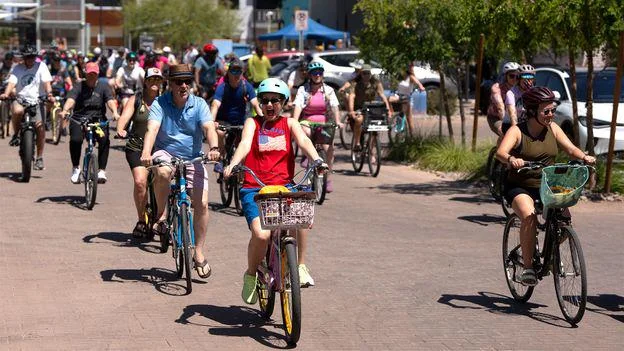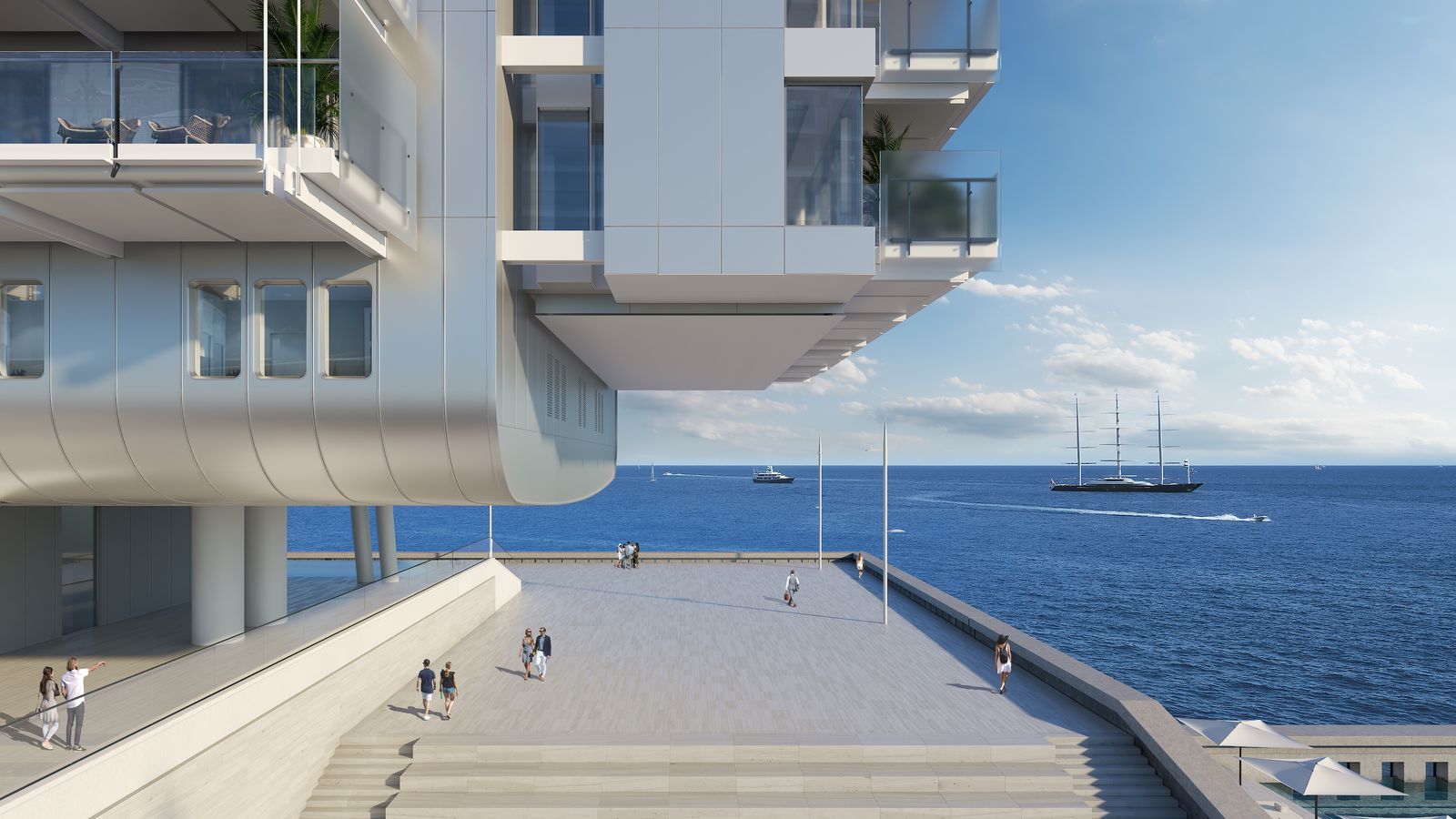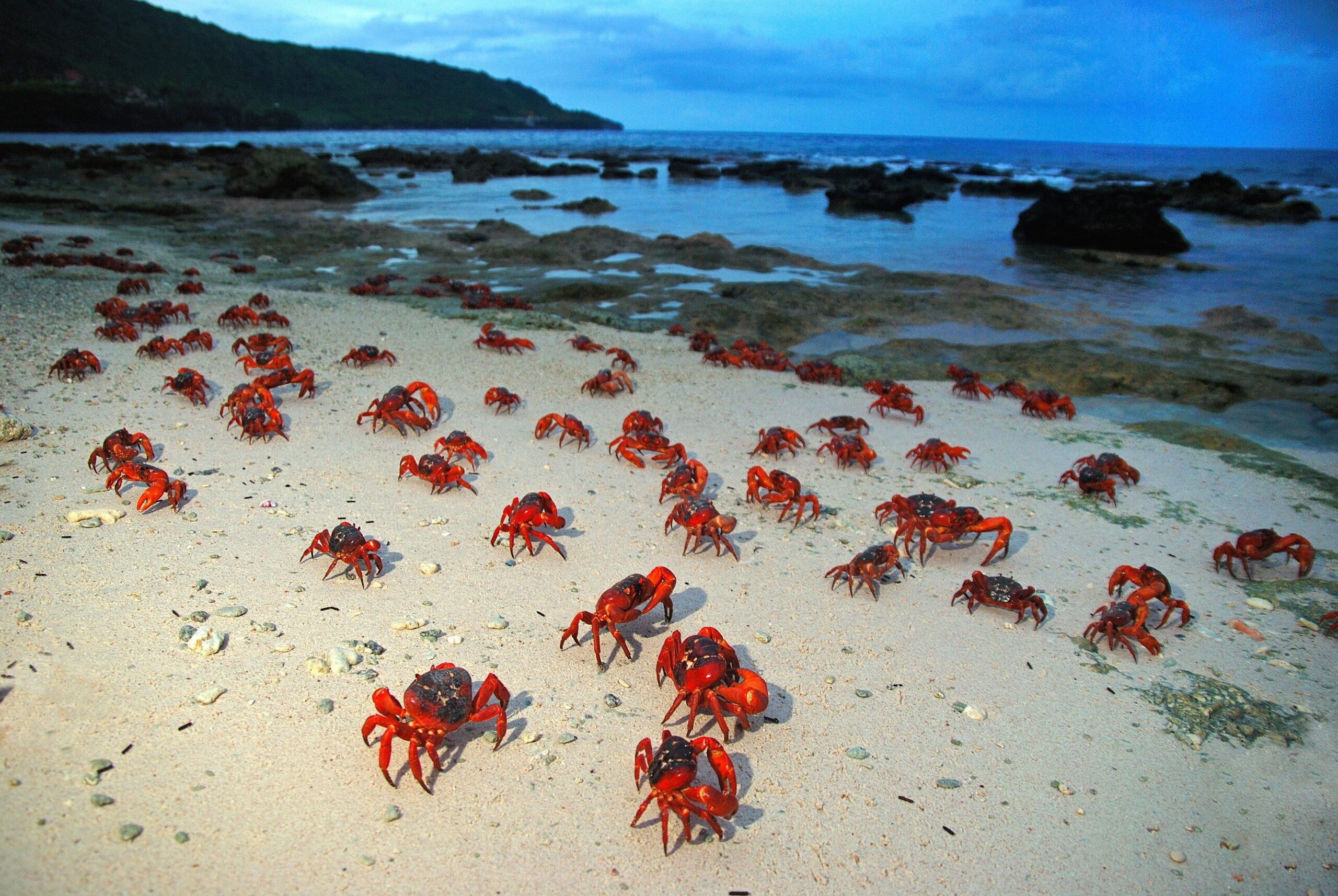Imagine stepping out your front door and feeling the warm breeze on your face, hearing neighbors chatting over coffee at a nearby plaza, and strolling to grab groceries without dodging traffic. No engine revs, no parking hassles—just pure, easy movement on foot. That’s the everyday reality in Culdesac Tempe, a groundbreaking spot in Arizona that’s flipping the script on how Americans live. I remember visiting a similar pedestrian haven in Athens years ago, where narrow streets buzzed with life and nobody seemed rushed. Turns out, you don’t need to cross the Atlantic for that vibe anymore. Right here in the US, this car-free enclave is proving that ditching wheels can spark joy, community, and even a bit of that Mediterranean magic.
What Is Culdesac Tempe?
Culdesac Tempe isn’t just another apartment complex—it’s a full-fledged neighborhood designed from the ground up without cars in mind. Spanning 17 acres in the heart of Tempe, Arizona, it opened its doors in 2023 and aims to house up to 1,000 residents once fully built. Picture low-slung white buildings clustered around shaded courtyards, with pathways winding through plazas, shops, and green spaces. No asphalt lots for residents, but plenty of room for bikes, scooters, and your own two feet. It’s right next to a light rail stop, making hops to downtown Phoenix or Mesa a breeze.
The Vision: Building for People, Not Parking
The folks behind Culdesac saw how car-dependent most US cities are and thought, why not try something different? Co-founders Ryan Johnson and Jeff Berens drew inspiration from walkable spots around the world, like those charming Greek islands where cars feel out of place. They wanted to create a place where daily life revolves around human connections, not horsepower. By skipping resident parking, they freed up space for things that matter: community gardens, outdoor lounges, and local businesses. It’s a bold bet in car-loving Arizona, but early signs show it’s paying off.
How It All Started
Back in 2018, the idea was just a sketch on paper—a response to urban sprawl and climate concerns. The site was an old auto body shop, ironically enough. After years of planning and zoning tweaks with Tempe’s city hall, construction kicked off in 2021. They partnered with architects who focused on desert-friendly designs, like bright white walls to bounce off heat and narrow paths that channel cool breezes. Today, it’s home to about 300 people, with more moving in monthly.
Key Features of the Layout
Think of it as a mini village. Buildings are two or three stories tall, arranged to maximize shade—crucial when summer temps hit 120°F. Pathways are gravel and packed clay, soft underfoot and eco-smart. There’s a central plaza for events, a dog park for furry friends, and even a gym. Retail spots include a Puerto Rican fashion shop and cafes, all within a short walk. No need to venture far; everything’s designed for that 15-minute city ideal.
Life Without a Car: Resident Stories
Sheryl Murdock, a researcher who splits time between Canada and Tempe, told the BBC she feels like she’s in Greece every time she walks home. No car means no gas bills or maintenance woes, and she’s offset her travel emissions by going car-free here. I chatted with a similar soul once—a friend who ditched his SUV after moving to a walkable spot in Portland. He joked that his wallet thanked him, but his legs got the real workout. In Culdesac, folks like Andre Rouhani and Gabriela Reyes were surprised at first by the no-parking rule but now love the freedom. Andre bikes to Arizona State University, while Gabriela uses the free light rail pass for errands.
Daily Routines Transformed
Mornings might start with a yoga class in the courtyard, followed by coffee at a local spot. Groceries? Scoot over to the nearby market or order delivery—drivers park in designated visitor spots. Evenings bring barbecues or impromptu chats with neighbors. One resident shared on Reddit how serendipitous interactions happen daily, turning strangers into friends. It’s that small-town feel in a big-city suburb.
Challenges and Adaptations
Not everything’s perfect. Some folks miss the convenience of a quick drive, especially for bulk shopping. Rain, though rare in Arizona, can turn paths muddy, as one reviewer noted. But the community adapts—ebikes and shared electric cars from partners like Envoy handle longer trips. Discounts on Lyft and Waymo make rides affordable. For families, it’s a mixed bag; kids love the open spaces, but noise from communal areas can be a nudge.
Benefits of Going Car-Free
Living without a car isn’t just novel—it’s packed with perks that ripple through health, wallet, and environment. Residents report feeling healthier from all the walking, with lower stress levels in a quieter setting. Financially, ditching car ownership saves thousands yearly on insurance, fuel, and repairs. Environmentally, it’s a win: fewer emissions mean cleaner air in a state prone to heat waves.
- Health Boost: Daily steps add up, promoting fitness without gym fees.
- Cost Savings: Average American spends $10,000+ on cars annually—here, that’s pocketed.
- Community Ties: Proximity fosters friendships, reducing isolation.
- Eco Impact: Less traffic cuts pollution, aligning with sustainability goals.
Pros and Cons of Car-Free Living in Culdesac
Like any lifestyle shift, Culdesac has its ups and downs. Let’s break it down honestly.
Pros:
- Strong sense of belonging—neighbors become like family.
- Built-in perks like free transit passes and ride discounts.
- Cooler microclimate thanks to shade-focused design.
- Access to amenities: gym, lounges, and local shops on-site.
Cons:
- Limited for those needing cars for work or disabilities.
- Potential noise from shared spaces.
- Adjustment period for car habits.
- Higher rents starting around $1,600/month, though utilities are included.
Comparing Culdesac to Traditional US Neighborhoods
How does this stack up against your average suburb? Here’s a quick table to visualize.
| Aspect | Culdesac Tempe | Traditional Suburb |
|---|---|---|
| Parking | None for residents; visitor spots | Abundant, often garages |
| Transportation | Walk, bike, light rail, rideshares | Car-dependent |
| Community Spaces | Plazas, courtyards, events | Lawns, driveways |
| Environmental Footprint | Low emissions, shaded design | High from cars, sprawl |
| Cost of Living Add-ons | Free metro, ebike access | Gas, maintenance fees |
| Social Interaction | High, designed for mingling | Lower, isolated homes |
Culdesac shines in connectivity and sustainability, while traditional spots offer more personal space but at a higher eco-cost.
Why Arizona? The Surprising Choice
Arizona might seem an odd pick for a car-free experiment—think endless highways and scorching sun. But Tempe’s progressive vibe, with Arizona State University nearby, draws young professionals and eco-conscious types. The light rail line was a game-changer, linking the neighborhood to Phoenix’s airport and beyond. Plus, the state’s growth boom means room for innovation. I recall hiking in the desert once and thinking how adapting to heat could inspire smarter urban planning. Culdesac does just that, using passive cooling to keep walkways 30 degrees cooler than surrounding pavement.
Heat Management Strategies
White-painted buildings reflect sunlight, while tree canopies and narrow alleys create natural air flow. Residents rave about staying comfortable outdoors, even in July. It’s a model for other hot spots, showing car-free doesn’t mean sweat-soaked.
Economic Ripple Effects
Local businesses thrive with foot traffic from residents and light rail riders. Shops track train schedules for customer surges. For Tempe, it’s a tourism draw—visitors book short-term stays to test the lifestyle.
The Broader Movement: Car-Free Trends in the US
Culdesac isn’t alone. Cities like New York and San Francisco have car-free zones, but full neighborhoods are rare. Mack’s Open Streets program bans cars on select roads, boosting biking. In Minneapolis, efforts to reduce parking minimums echo Culdesac’s approach. Globally, places like Vauban in Germany or Barcelona’s superblocks inspire. Here in the US, it’s catching on—92% of Gen Z prefers walkable areas, per surveys.
Other Notable Spots
- Mackinac Island, Michigan: No cars since 1898, all horses and bikes.
- Fire Island, New York: Beach community reliant on ferries and feet.
- Bald Head Island, North Carolina: Golf carts rule, cars stay on the mainland.
These prove car-free works, but Culdesac scales it modernly.
People Also Ask: Common Questions About Car-Free Neighborhoods
Drawing from real Google queries, here’s what folks wonder.
What US Cities Are Closest to Being Car-Free?
New York tops the list with its subway system—many Manhattanites never drive. San Francisco and Boston follow, thanks to dense layouts and public transit. Chicago’s Loop is walkable, while Philadelphia’s Center City thrives sans cars.
Where Is the Best Place to Live Car-Free in the US?
Beyond big cities, college towns like Madison, Wisconsin, or Boulder, Colorado, shine with bike paths and buses. For warmth, Culdesac Tempe offers a unique blend of desert charm and accessibility.
Are There Any Completely Car-Free Cities in the US?
Not full cities, but islands like Mackinac ban cars entirely. Urban experiments like Culdesac push boundaries, proving pieces of cities can go car-free successfully.
What Are the Benefits of Living Without a Car?
Savings on costs, better health from activity, reduced pollution, and stronger community bonds. It’s liberating, as one resident put it, like reclaiming your time from traffic jams.
How to Experience Culdesac Yourself
Curious? Book a short-term rental via their site or Airbnb—units start at around $100/night. Tour the grounds, hop the light rail to Tempe Marketplace, or join a community event. For locals, leasing info is on culdesac.com. If you’re eyeing similar spots, check resources like Strong Towns for advocacy tools.
Best Tools for Car-Free Living
Apps like Transit for routes, Lyft for rides, or Strava for biking make it seamless. Ebikes from brands like Rad Power are game-changers for hills or distance.
The Future: Scaling Car-Free Communities
Culdesac’s success could spark copycats. Plans for expansion in Mesa hint at more Arizona sites. Nationally, zoning reforms might allow more. Imagine neighborhoods where kids play freely, air is cleaner, and life slows to a human pace. It’s not utopian—it’s practical, as Tempe shows.
Potential Hurdles Ahead
Scaling means tackling accessibility for all, like those with mobility needs. Policy shifts are key; cities must ease parking mandates. But with resident happiness high, the momentum’s there.
FAQ
Is Culdesac Tempe Really Car-Free?
Yes, no resident parking on-site or nearby streets per lease. Visitors and deliveries have spots, and shared vehicles cover needs.
How Do Residents Get Around?
Free Valley Metro passes, ebike shares, Waymo autonomous rides, and walking. It’s all integrated for ease.
What’s the Cost to Live There?
Rents from $1,600 for studios, including utilities and perks. Comparable to Tempe averages but with savings on transport.
Can Families Live in Culdesac?
Absolutely—play areas and community events suit kids. Some park cars off-site if needed, though most embrace the lifestyle.
How Does It Handle Arizona’s Heat?
Shaded designs keep paths cooler, with indoor amenities for peak heat. Residents adapt with early outings or AC lounges.
In wrapping up, Culdesac Tempe isn’t just a neighborhood—it’s a glimpse of a fresher way forward. Like that Greek island escape, it reminds us life thrives when we prioritize people over machines. Whether you’re dreaming of ditching your car or just curious, this spot proves change is possible, one step at a time. For more, visit Culdesac’s official site or read the BBC feature. If you’re building a site, link internally to related urban living posts for better engagement.
(Word count: 2,756)




